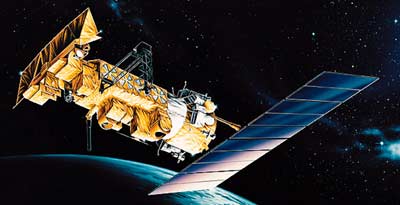What is this world coming to when a weather satellite that was designed for a two-year mission starts to fail 21 years after launch? I mean, really — where’s the pride these days?
All kidding aside, it seems like NOAA-15, a satellite launched in 1998 to monitor surface temperatures and other meteorologic and climatologic parameters, has recently started showing its age. This is the way of things, and generally the decommissioning of a satellite is of little note to the general public, except possibly when it deorbits in a spectacular but brief display across the sky.
But NOAA-15 and her sister satellites have a keen following among a community of enthusiasts who spend their time teasing signals from them as they whiz overhead, using homemade antennas and cheap SDR receivers. It was these hobbyists who were among the first to notice NOAA-15’s woes, and over the past weeks they’ve been busy alternately lamenting and celebrating as the satellite’s signals come and go. Their on-again, off-again romance with the satellite is worth a look, as is the what exactly is going wrong with this bird in the first place.
Eye in the Sky
NOAA-15’s heritage stretches back to the early 1960s, when meteorologists realized that satellites with infrared imagers would be a dandy way to gather data on surface temperatures, water vapor distribution, and other parameters that go into a decent weather forecast. The first of the Television Infrared Observation Satellites, or TIROS, were extremely simple satellites, carrying little more than a TV camera and a transmitter. But these satellites returned the first pictures of Earth from space, and provided the first glimpse of what the future of remote sensing held.
Forty-odd years later, weather satellites had more than proven their worth, and under the auspices of the National Oceanic and Atmospheric Administration, the US government body responsible for gathering weather and climate data and turning it into useful products, an impressive constellation of weather satellites was in service. NOAA-15 was added to this constellation, along with identical sisters NOAA-16 and NOAA-17.
Known collectively as NOAA KLM, each satellite had a slightly different sun-synchronous orbit, and each was equipped with the latest in remote sensing technology. In addition to microwave sounding units of the type that are potentially at risk by the 5G cell phone rollout, the NOAA KLM satellites were equipped with an instrument known as the AVHRR, or Advanced Very-High Resolution Radiometer. This instrument was to be the workhorse of the satellites, producing images of the Earth below in six different wavelengths in the visible and infrared.
To produce images, a scanning motor rotates a flat beryllium mirror mounted at an angle in front of an 8″ (20 cm) reflecting telescope. The motor rotates the mirror at 360 RPM, which scans the surface below in 1.09-km wide strips. The data from …read more
Source:: Hackaday

